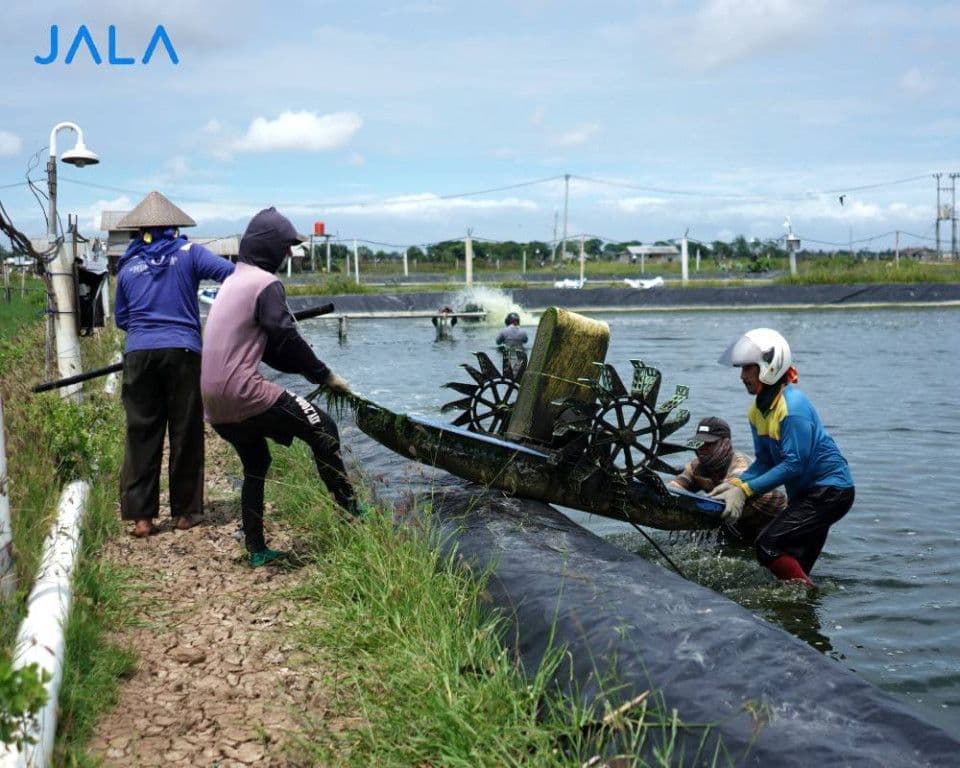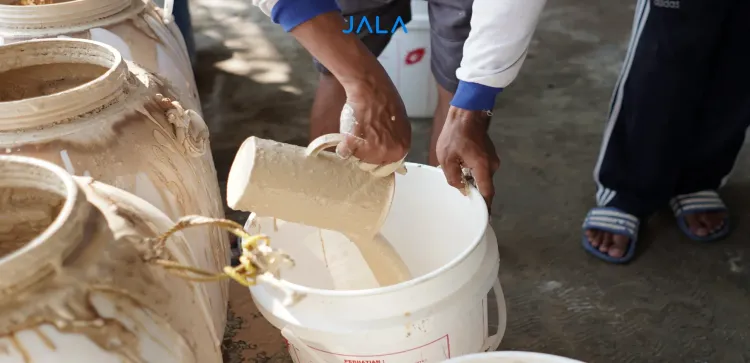
Maintaining hygiene is part of the implementation of biosecurity in shrimp farms. Biosecurity also ensures that all existing facilities are free from disease-causing organisms. It should be implemented throughout all stages of cultivation, from land preparation, stocking, growing out, and harvest, as well as preparation for the next cultivation cycle.
The basic considerations in implementing biosecurity is preventing infection as well as the cause and spread of diseases, and providing standards for monitoring and reporting in order to ensure a smooth cultivation. Here are some purposes of biosecurity:
- Prevent the spread of disease from its source to other places
- Prevent the spread of disease from ponds to the surrounding environment
- Prevent the infection of disease from one cultivation cycle to another
Disease may spread through several media, such as farm equipment including boats, nets, water quality measurement devices, windmills, and so on. The equipment should be sterilized to prevent them from carrying disease agents or spreading disease. If possible, each pond should have individual tools that are not used in other ponds. Each tool should be regularly cleaned and disinfected to eliminate any viruses or bacteria.
Diseases may enter the cultivation system through external sources such as water, animals, humans, and equipment. Animals, humans, and equipment can be the media for the spread of disease on farms. Educating and organizing cultivation staff, technicians, and visitors is important to let them aware of biosecurity principles.
How to maintain hygiene in shrimp farms?
Hygiene management should be implemented in all cultivation facilities. Recycle trash and waste as much as possible, or dispose of them in areas that will not contaminate shrimp ponds nor the surrounding environment. Moreover, ensure that cultivation staff and field technicians maintain good personal hygiene when carrying out any activity.
For better implementation, here is a guide for farmers to maintain the hygiene of the equipment, materials, and humans in shrimp farm areas:
- Implement hygiene management around cultivation facilities
- Recycle trash and waste as much as possible, or dispose of them in areas that will not contaminate shrimp ponds nor the surrounding environment
- Prepare disinfectants in every entry point to the pond or other facilities in the cultivation area
- Cultivation staff and field technicians should maintain good personal hygiene when carrying out any activity
Resources:
Aqua Deals. 2017. Best Management Practices for Biosekuriti & Shrimp Health Management.
Lees, D. and S, McDonald. 2016. Options to Strengthen On-farm Biosecurity Management for Commercial and Non-commercial Aquaculture. Ministry for Primary Industries - New Zealand.
Tacon, A. G. J. 2013. Biosecure Shrimp Feeds & Feeding Strategies of the Future. Aquahana.





